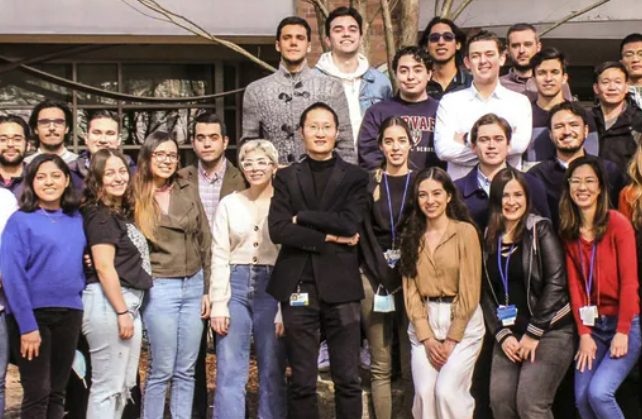Bioprinting pioneer Dr. Y. Shrike Zhang from Harvard University gives a clear statement about this myth in an interview conducted by in-vision.
Research on the cutting edge
Widely known as one of the leading experts in 3D bioprinting with more than 180 lectures, over 700 manuscript reviews and dozens of industry awards and honors to his credit, Shrike directs the ZHANG LAB as an assistant professor at Harvard Medical School, and an associate bioengineer at Brigham and Women’s Hospital. In-vision Technologies met him for an Interview for In-Vision´s newsblog PROJECTED:
About challenges in tissue engineering and first 3d printed organs
Professor Zhang, there is such a fast development in Bioprinting but also so many myths around it. When might we see the first organ come out of a printer?
We’re already 3D printing some tissues now in the lab, including skin, brain-like structures, cartilage and even heart-like structures. For real-world applications and on-demand production, we still have work to do, but I expect we’ll see things like skin come out of the printer within the next few years and organs within a couple of decades, hopefully.
What makes tissue engineering such a challenge?
The incredible complexity of human tissues makes 3D bioprinting organs a formidable challenge and mastering multi-material printing – the ability to print multiple cell types within a single structure – is key. In addition, vascular bioprinting would be a game changer. Because every human tissue requires vasculature to enable blood flow, the ability to create vascularized tissue will be critical for developing functional tissues.
User-friendliness of the technology and a lack of standardization and reproducibility are also challenges in moving bioprinting out of the lab and into commercial production. Right now, bioprinting is extremely complex, requiring a multidisciplinary team of mechanical and bioengineering, biochemistry, IT and material science experts. And each research team is developing their own equipment, materials and techniques.
In the lab, we can play with things, spend hours experimenting, developing and testing new techniques, and bringing in experts to fix things when they don’t work. But that’s not practical in the real world. In order to bring 3D bioprinting to the bedside, we need a unified, standardized and reproducible approach with user-friendly printers that can be operated in an environment where these advanced skills aren’t readily available.
Reliably producing viable tissue at scale hinges on three key components: fast and automated “push-button” printing technology, biocompatible materials, and advanced light engines.
Because extrusion techniques are slow and limited in their capability produce complex structures, DLP technology has emerged as the de facto standard for bioprinting development. With its layer-by-layer building approach, faster speed, and high-resolution photographic imaging, DLP oftentimes enables more complex printing capabilities.
What is the biggest challenge regarding biomaterials?
While 3D printing acellular structures is relatively straightforward, printing components that are biologically active for implantation in the human body is a much bigger challenge. The inks and associated components such as photoinitiators and crosslinkers used must be not only biocompatible so that the finished product functions without causing harm once in place, but also the tissues must be able to survive the printing process itself. Furthermore, the UV light engines commonly used in 3D printing are less compatible with living organisms. In short, the cells have to be able to survive the printing process under optimized conditions.
Shrike and others have shifted toward utilizing visible light initiators that rely on LED light engines for crosslinking and activation. These LED light engines also enable a much higher printing resolution for greater precision in the finished part.
What is your ultimate goal for bioprinting and regenerative engineering?
My dream is that one day we’ll have a printer that allows you to press a single key and it does everything automatically. This capability would absolutely change the future of medicine and mankind. We’d never have to worry about organ failure again—we could just replace them within a reasonable time.
Scientifically that’s very interesting, although it does raise some ethical questions, of course. But we still have some time to work that out…
About Y. Shrike Zhang
Y. Shrike Zhang Ph.D., is an Assistant Professor at Harvard Medical School Associate Bioengineer, Brigham and Women’s Hospital Affiliate Faculty, Harvard Stem Cell Institute Affiliate, Harvard-MIT Health Sciences and Technology. Dr. Zhang’s research interests include 3D bioprinting, organ-on-a-chip, biomaterials, regenerative engineering, and bioanalysis.
Article published with kind permission of In-Vision Technologies AG.
Subscribe to our Newsletter
3DPresso is a weekly newsletter that links to the most exciting global stories from the 3D printing and additive manufacturing industry.






















